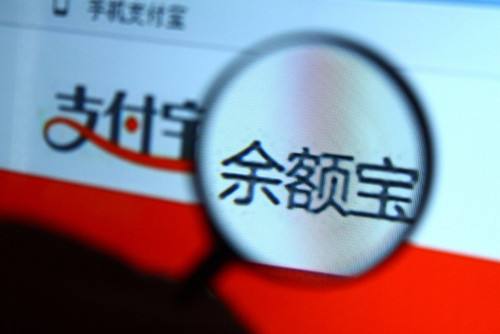
As rapid growth and excessive size elevate liquidity risk for Yu’E Bao, a cash management tool, the possibility of a crisis such as bank run has heightened, noted Dong Ximiao, visiting researcher at the Chongyang Institute for Financial Studies, Renmin University of China, in an article published in the finance section of sina.com on July 7, 2017.
According to statistics, as of June 30, the closing balance of Yu’E Bao’s net assets was RMB 1.43 trillion, accounting for 28% of China’s total monetary funds. Compared with the end of last year, it represents a sharp rise by nearly 80%.
Figures related to funds flow for the first quarter of the year show that about 64% of Yu’E Bao’s funds were exhausted as bank deposits and payment settlements. In addition, about 20% of funds were used to buy back sold financial assets, while about 16% were invested in bonds. As for the investor type, Yu’E Bao’s annual report for 2016 demonstrates that the number of its funds holders reached 325 million, comprising 99.72% individual investors and 0.28% institutional investors.
Distinct from bank deposits, Yu’E Bao is a monetary fund that the users can redeem at any time. The volume of liquidity of such a monetary fund can be replenished only in two ways: by purchasing new funds or by liquidating the assets held. In the event of substantial fluctuations in the financial market or Yu’E Bao suffering a negative blow, subsequent redemption by the over 300 million users may trigger a disaster for Yu’E Bao, thereby putting the entire financial system at risk.
Drawing upon foreign experience, the following three measures may be taken to improve the regulation of monetary funds:
Firstly, the threshold of redemption must be raised. China’s current baseline for monetary redemption is 5% to 10% with respect to liquid assets, which is lower than the 10%-30% benchmark in the United States; therefore, there is great room for adjustment in China. A reasonable increase in the redemption threshold may take the edge off investors’ impulse for redemption to a certain extent, thereby lowering liquidity risks. Fund managers should also take a variety of measures to develop contingency plans and strengthen their control over liquidity risks.
Secondly, funds should be managed on the basis of their classification. For example, the funds can be categorized into institutional monetary funds and retail monetary funds, and then stricter regulation can be imposed on the institutional group. In the case of Yu’E Bao, although institutional investors do not have a large share, yet risks are ever increasing as the size of such investors enlarges. With an incessant rise in the annual rate of return on monetary funds along with the absence of entry barriers for institutional investors who are disenchanted with a sluggish stock market, liquidity risk is likely to build up as the money flow increases.
Thirdly, funds should be made more transparent. According to Measures for the Supervision and Administration of Money Market Funds issued by the China Securities Regulatory Commission in 2016, fund managers shall be encouraged to voluntarily increase the frequency and content of their disclosure of information on monetary funds, so as to improve the transparency of such funds. However, no mandatory requirements have been set yet. For the next step, the authorities can follow the US practice of requiring a daily quotation for monetary funds based on their face value to further improve transparency. This move will help authorities more accurately follow up on funds operation and mitigate the risk of runs on the market.




 A single purchase
A single purchase








